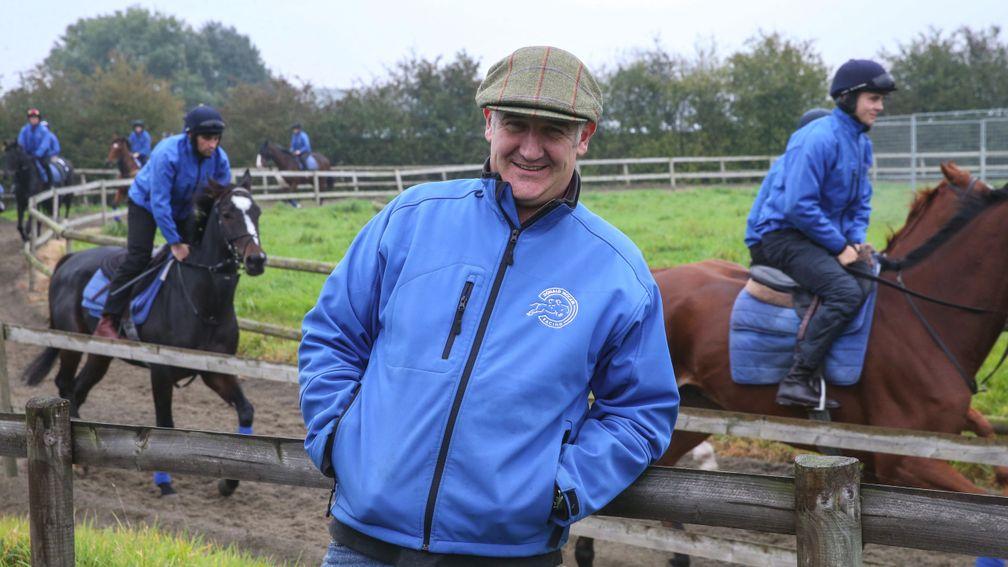BHA tackles stable staff shortage with course for students

The BHA is launching a new initiative aimed at tackling the stable staff shortage that will target students from Britain's equine colleges.
In a scheme developed with the British Racing School and Northern Racing College it is offering 32 places on a training course which will include work placements in racing yards.
The Entry to Employment Programme, which will be free of charge to students this year, has been designed to encourage those who already have hands-on experience with horses into a career as a groom or work rider.
Funded by the Racing Foundation it is part of a wider, ongoing drive aimed at trying to address the substantial shortage of skilled work riders and grooms in racing yards.
Carole Goldsmith, the BHA’s director of people and development, said: "We've been working with equine colleges for some time now, providing careers lectures to showcase the employment opportunities in racing.
"We've also partnered with Racing to School and their rider programme to ensure that all equine college students get the opportunity to visit a yard and racecourse to really experience the working environment.
"Following a small pilot last year we established a requirement to upskill equine college graduates with more specific training related to riding and caring for racehorses to get them ready for employment in a racing yard."
The programme, which consists of a four-week residential training course followed by a work placement at a training yard, will teach participants the specifics of how to ride and look after racehorses and will take place at both the BRS and NRC, with 16 places on offer at each this summer.
Applicants must be in their final year of studies for an equine or animal-related qualification at an equine college or have recently graduated and have a strong interest and desire to work with racehorses.
The residential courses will run during the summer months with applications now open until June 9. Successful applicants will be invited to attend an assessment day which will include an interview and assessment of riding ability, fitness and suitability for the course.
Trainer Donald McCain said: "This is a great initiative and I know of a number of young people who this would suit down to the ground.
"Anything that can be done to recruit more stable staff should be applauded."
Applications, which close on June 9, can be made via careersinracing.com.
COMMENT
Long-overdue scheme vital in bid to make racing more visible
The launch of this initiative is excellent news – it's both a decisive step in helping to address the stable staff shortage and, in my opinion, long overdue.
Equine colleges across the country turn out thousands of students a year who could seamlessly step into the racing industry – they have the skills, the experience and, most importantly, are under no illusions as to how much hard work a hands-on career with horses involves.
However, many are not aware of what a career in racing has to offer, and just how rewarding it can be. Typical further and higher education courses tend to attract those who have been more involved in the sports horse world (dressage, show jumping, eventing, showing etc.), and so it's vital racing makes itself more visible to students as they look beyond their college years.
I studied at Myerscough College, based near Preston, and in four years there not once do I recall Haydock Park or Aintree being promoted around campus, although they're on the doorstep. This simple introduction to the sport could have easily piqued the interest of many a student.
It would be wrong to imply the sport has done nothing to capture these young minds, but a much larger, concerted effort is needed to fully mobilise the potential on offer.
Racing is in a crisis it needs to address, and has been missing a huge opportunity – it's vital now more than ever we now grasp it with both hands.
Katherine Fidler
- 'It's a dream come true' - 18-year-old to follow in Khadijah Mellah's footsteps with ride in the Magnolia Cup
- Merci Olivier! No final winner for Olivier Peslier but the world of racing unites in saluting the end of a great career
- The latest edition of the Racing Post is available to read online now - here's how you can access it
- How Smart View recorded a 76 per cent profit at the Cheltenham Festival
- Smart View is available on the Racing Post app - how to read the revolutionary new racecard
- 'It's a dream come true' - 18-year-old to follow in Khadijah Mellah's footsteps with ride in the Magnolia Cup
- Merci Olivier! No final winner for Olivier Peslier but the world of racing unites in saluting the end of a great career
- The latest edition of the Racing Post is available to read online now - here's how you can access it
- How Smart View recorded a 76 per cent profit at the Cheltenham Festival
- Smart View is available on the Racing Post app - how to read the revolutionary new racecard